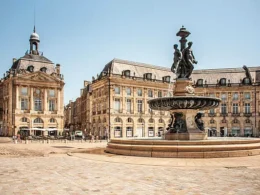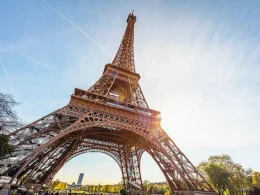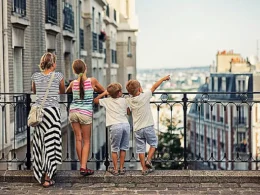Medieval fairs in France have long been a significant cultural and historical celebration. These events trace their origins back to the Middle Ages, serving as important marketplaces and social gatherings. With their distinctive features and attractions, medieval fairs have played a crucial role in preserving and showcasing the traditions of the past.
The significance of these fairs lies in their ability to offer a window into the rich history and customs of medieval France, allowing modern audiences to connect with and appreciate the heritage of the era. Today, these fairs continue to thrive, evolving into modern-day celebrations that honor the medieval period and its enduring influence on French culture.
Origins of Medieval Fairs in France
The origins of medieval fairs in France can be traced back to the early Middle Ages, when they served as important marketplaces for the exchange of goods and services. These fairs played a crucial role in the feudal economy, facilitating trade and contributing to the economic development of the region.
Additionally, they were vital hubs for cultural exchange, where people from different regions and backgrounds would converge, bringing with them not only goods but also ideas, traditions, and practices. This cultural interchange helped in the diffusion of knowledge and innovation, enriching the social fabric of medieval France.
The fairs became emblematic of the dynamic and interconnected nature of medieval society, fostering economic growth and fostering a sense of community among the people.
Key Features and Attractions
During medieval fairs in France, a myriad of attractions and key features captivated attendees, offering a rich tapestry of entertainment, commerce, and cultural exchange. The following are some of the key features and attractions:
- Jugglers, Minstrels, and Acrobats: Visitors were entertained by skilled performers showcasing their talents in juggling, music, and acrobatics, adding a festive and lively atmosphere to the fairs.
- Medieval Market: The fairs boasted bustling markets, where merchants from near and far offered an array of goods including textiles, spices, and artisanal crafts, providing an immersive experience of medieval commerce.
- Historical Reenactments: Attendees were treated to captivating historical reenactments, bringing to life scenes from medieval times, complete with knights, nobles, and common folk, showcasing the era’s customs and traditions.
- Feasting and Merriment: The fairs were renowned for their lavish feasts and revelry, allowing visitors to indulge in sumptuous food, drink, and communal celebrations, creating an authentic medieval experience.
Significance of Medieval Fairs
Medieval fairs in France held significant cultural and economic importance, serving as vibrant hubs for trade, entertainment, and social interaction. These fairs were not only about commerce but also played a pivotal role in preserving cultural heritage.
They provided a platform for the exchange of goods, ideas, and cultural practices, thereby contributing to the rich tapestry of French cultural history.
Additionally, the economic impact of these fairs cannot be understated. They facilitated the growth of local and international trade, leading to the prosperity of various regions. The influx of merchants, artisans, and visitors also stimulated the economy by creating employment opportunities and boosting local businesses.
Therefore, medieval fairs in France were not just fleeting events but integral components of the nation’s cultural and economic development.
Modern-Day Medieval Fairs
In the contemporary era, modern-day medieval fairs in France continue to uphold their historical significance by serving as platforms for cultural preservation and economic exchange. These fairs bring together enthusiasts of medieval history, offering a unique blend of entertainment and education.
Key highlights of modern-day medieval fairs include:
- Authentic medieval costumes and reenactments that immerse visitors in the historical ambiance.
- Diverse entertainment such as jousting tournaments, traditional music, and theatrical performances, providing a captivating experience for attendees.
- Artisanal crafts and traditional food and drink, showcasing the skills and flavors of the medieval period.
- Opportunities for local businesses and artisans to showcase their products, fostering economic activity and community cohesion.
Together, these elements contribute to the enduring appeal of modern-day medieval fairs, ensuring the preservation and celebration of France’s rich medieval heritage.
Frequently Asked Questions
What Were the Most Popular Goods Traded at Medieval Fairs in France?
Popular goods traded at medieval fairs in France included textiles, spices, metals, and agricultural products. Trade regulations were enforced to ensure fair transactions and quality of goods. These fairs were essential for economic exchange and cultural interaction.
How Were Medieval Fairs Regulated and Organized by the Authorities?
Medieval fairs in France were regulated and organized by a comprehensive regulatory framework established by the authorities. The administrative structure involved appointed officials overseeing fair operations, enforcing trade laws, ensuring safety, and resolving disputes.
What Were Some of the Popular Entertainment Activities at Medieval Fairs in France?
Medieval entertainment at fairs in France encompassed various fair traditions, such as jousting tournaments, acrobatic performances, and troubadour music. These activities captivated attendees, providing a rich cultural experience and contributing to the festive atmosphere.
Did Medieval Fairs in France Have Any Religious or Spiritual Significance?
Medieval fairs in France often held religious significance, serving as opportunities for communities to engage in religious rituals and ceremonies. These events were deeply intertwined with spiritual beliefs, fostering a sense of communal piety and devotion.
How Did Medieval Fairs in France Influence the Development of Trade and Commerce in the Region?
Medieval fairs in France significantly influenced the development of trade and commerce in the region by fostering the establishment of guilds, facilitating economic growth, expanding trade routes, and promoting cultural exchange, thereby contributing to the region’s economic prosperity.










